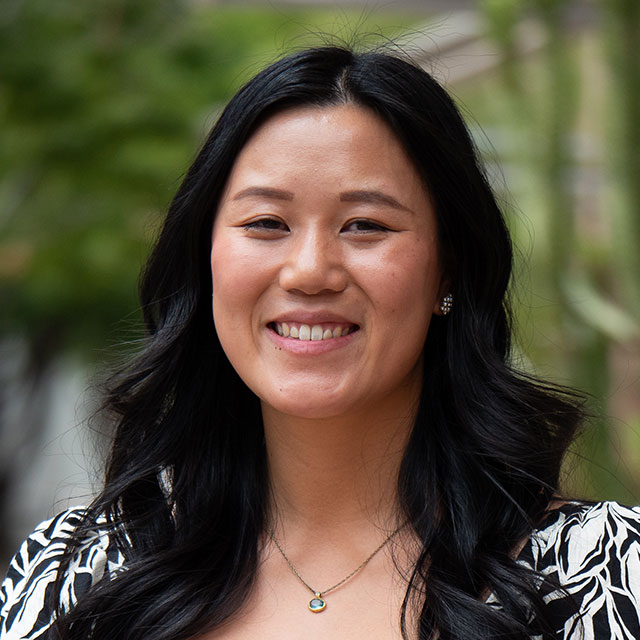When Nick Carson reflects back on his time as a middle school assistant principal, one of the things he wishes he could’ve had was more time — time with his leadership team to plan, to listen, to learn, to make lasting changes at his school.
“I would have loved the opportunity to bring a team together with a clear focus on change strategy having dedicated time with my team and access to the insights and experiences of others who have been through it before, this would have allowed me to create a plan tailored to my school community,” shares Carson, the assistant director of regional implementation support for the Next Education Workforce™.

Carson’s personal experiences make collaborating with school partners through the Leader Launchpad workshop series of the Next Education Workforce initiative all the more meaningful.
For school leaders like Carson who rarely have the time and space to innovate, Leader Launchpad will help them define a shared vision that connects innovations in staffing to existing school goals and priorities, select their first educator teams, redesign the master schedule to support teaming and more — ultimately allowing leaders to walk away with a plan of action for the year ahead. Leader Launchpad will be offered twice this spring: beginning in January and March 2025 and each series will consist of five, 90-minute, virtual sessions.
Below, Carson answers questions about Leader Launchpad, including why it was created, what changes have been made to the offering and what he’s most excited about.
Rachel Nguyen-Priest: Who can attend Leader Launchpad and why is it important to attend as a team?
Nick Carson: Leader Launchpad is really meant for school leaders who are hands-on with implementing team-based models — principals, assistant principals, coaches and even teacher leaders. It’s designed to support the people who are directly making it happen.
There will be opportunities during each 90-minute session to learn how the different elements of team-based models look in action in some of our partner schools that have been doing this work for a little bit longer. They’ll also have ample time as a team to be thinking about their own context. That’s why we’re encouraging multiple voices and bringing entire teams together — so they can share perspectives, collaborate and turn what they’ve learned into meaningful action.
RNP: Why did the Next Education Workforce initiative create Leader Launchpad?
NC: We know launching team-based models is a big effort for any school to undertake. It takes lots of strong change leadership at all different levels, and so we want to create the space to support leaders in really defining their “why for teaming;” why they’ve decided to undertake this transformative strategy for moving to team-based models and then create very clear goals for what they’re going to go to achieve within this model as well as an accompanying plan for how to go about that in the upcoming year.
We believe that we have lots of perspectives and lessons learned from our work with dozens of school partners around not only what team-based models are but how to actually go about it from the leadership seat in successfully implementing — especially during that first year — for sustained success.
|
RNP: How has Leader Launchpad evolved over time?
NC: We continue to learn from those that we’re partnering with in different schools and systems and so we revise content each year based on the insights and experiences those established school leaders share with us.
Going into this upcoming series, we really want to make sure that teams have space to define a very clear vision; what we call the “why for teaming” that is specific to their context. We also want to support teams in connecting their “why” to some very clear success metrics. Given that their “why” should guide everything, we will support teams in connecting every decision in their plan to both their purpose and their vision for success. To support this, we provide examples and artifacts for each key area, along with deep dives into how to implement team-based models effectively within their school.
For example, one of the first things leadership teams create is their master schedule to ensure that educators can access common planning time on a daily basis. We show an example of why that’s important, how to do that and then give them time and space to begin exploring that with their schedule.
RNP: Why are schools implementing Next Workforce Education team-based models? What “whys” are you hearing?
NC: Someone’s “why for teaming” in one school might be around the fact that they live in a rural community and they have a hard time staffing up their entire school so they have to get really creative around new human capital solutions. Someone else’s “why” can be deeply connected to the fact that they have a very diverse student learning population and they want to create learning spaces and opportunities that allow them to have more opportunities for deeper learning opportunities like project-based learning or personalized learning. So their “why” could be very connected from the student learning lens.
It’s really important to first, figure out why you’re coming to this approach so you can communicate often to your school community and invest them in taking on this new way of working and teaching. Even though we believe and see lots of success of this model, we also know that any change is hard. Completely redesigning how we staff schools, moving from the traditional one-teacher, one-classroom, one-roster model to multiple teachers and sharing a roster of students during a shared period of instructional time, presents challenges.
We want schools to stay laser-focused on their purpose so that during those times when it’s challenging, they remember their “why” and continue to hold their vision for team-based staffing.
RNP: How can participants set themselves up for success?
NC: We do think that they’re going to set themselves up for the most success and really be able to maximize their experience if they have taken some time to better understand what team-based models are so they can really jump in with their team on how to apply this to their school context. We’re asking folks to engage with us in one of a variety of different ways given their time constraints, including Explore Experience. The easiest is digging into our free Virtual Site Visits. We hit the ground running and begin to translate what team-based models are into how this applies to their contexts so we’re maximizing those five sessions.
Questions?
Contact: Nick Carson at nicholas.b.carson@asu.edu
Leader Launchpad workshop series
Design your school’s first team-based model(s) and plan the systems and structures to support your model. During these workshops, you will prepare to pilot your model by:
- Clearly identifying what outcomes team-based staffing will help improve
- Identifying in which grades and with which educators you will pilot team-based staffing
- Creating a master schedule that prioritizes co-planning and a plan to maximize existing space
- Drafting a plan for engaging your school community
- Connecting with other leaders implementing team-based models in their schools
What: Five, 90-minute virtual workshops to help school leaders prepare to launch their team-based models
Who: Primarily school leaders, but may also include system-level leaders, educators and other decision makers
When: Offered multiple times each year throughout the spring
Explore Experience
Learn about the elements of team-based models and consider if this approach is right for your school or system context. With this offering, you will:
- Watch virtual site visits in advance of the 90-minute synchronous session to see team-based models in action
- Hear from educators and leaders implementing team-based staffing models
- Explore how Next Education Workforce team-based models engage learners and empower educators
What: Complete the virtual site visit on your own schedule, then join us for one 90-minute virtual session offered monthly
Who: System-level leaders, school leaders, educators and community members
When: Offered monthly



